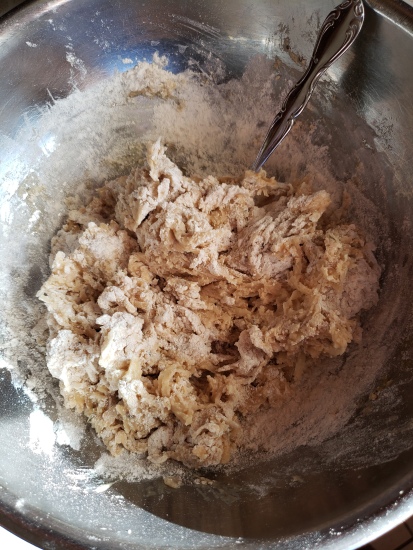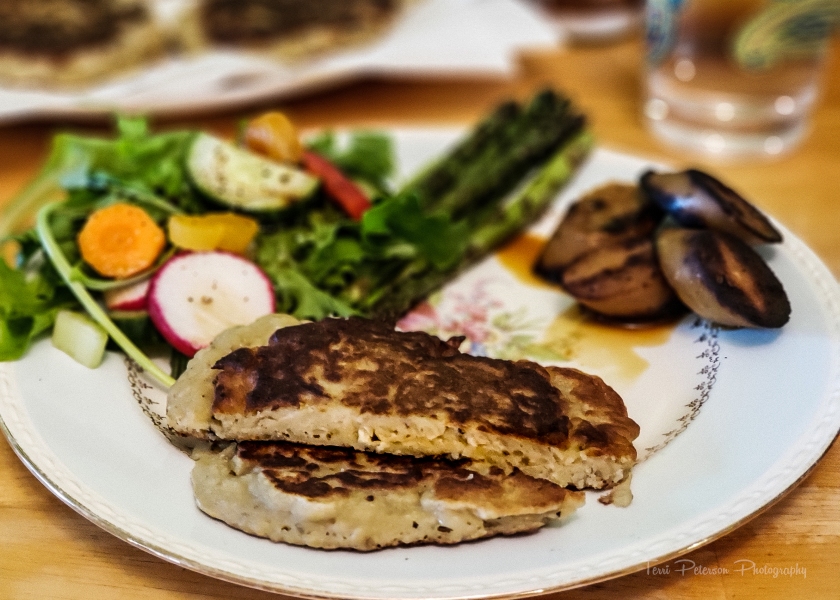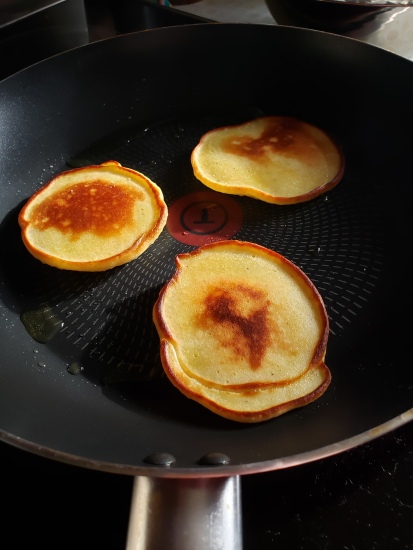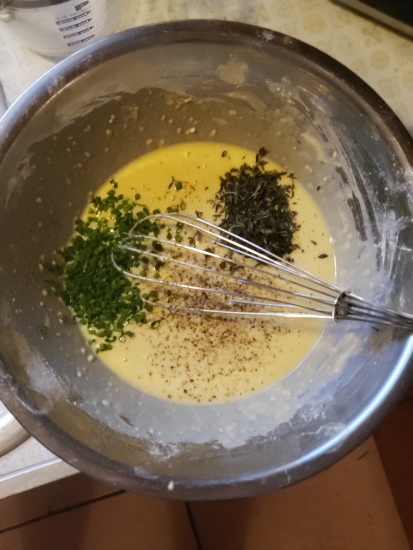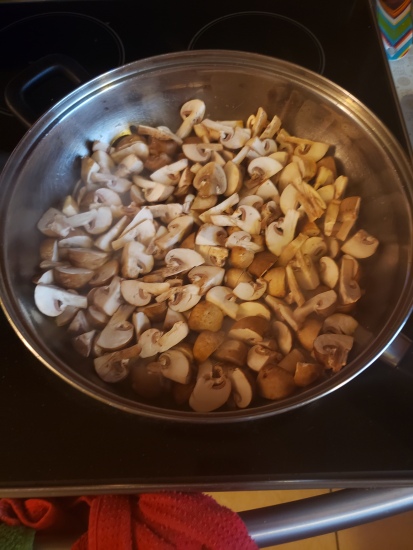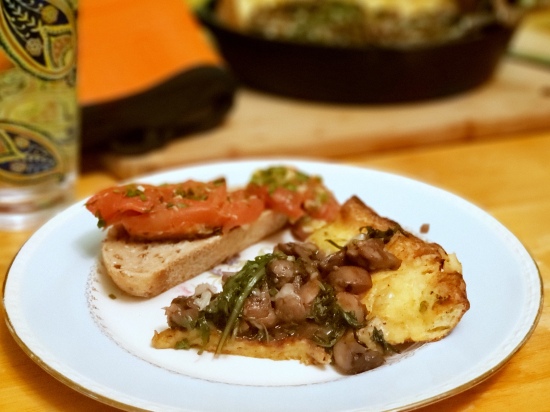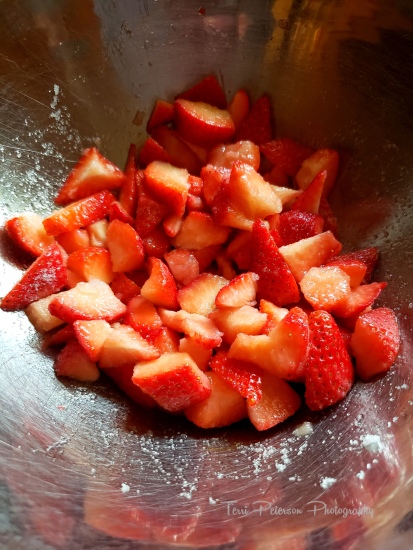“Boxty in the griddle, boxty in the pan, if you can’t make boxty, you’ll never get your man”.
This underscores the love my Emerald Isle kin feel for the mighty potato bread, boxty. I’m kind of surprised my Irish grandmother didn’t impart this bit of wisdom on me herself, though I am sure if she lived to see me to marrying age, she would have.
Ahhh, boxty. Yummm, boxty! And, for those of us without Irish relatives to sing us jingles reminding us about the precipitous nature of our own marriageability, just what in the heck is boxty, anyway?
A celebration of the humble potato and a product that is greater than the sum of its parts, boxty is a combination of both mashed and grated tater, combined into one glorious foodstuff. And by stuff, I mean stuff-it-in-yo-mouth. It can be savory, it can be sweet, it can be boiled like a dumpling, baked like a loaf or, most popularly, pan- or griddle-fried, like a pancake. Today, we’ll be frying the boxty in a pan. Boxty’s name is derived either from the Gaelic “arán bocht tí”, poor house bread, or “bácús”, bake house. I lean toward the former etymology, since this is clearly peasant food. While making my boxty for this blog, I thought, what if I were a housewife in pre-famine Ireland, reliant on potatoes, with a husband who ate, so say historians, up to 6kg (or, 13 pounds, for those not on the metric system) of potatoes a day? How do you look at a pile of leftovers, think about hungry mouths, and stretch the taters to tomorrow and not let precious food go to waste? By grating the fresh potatoes into the mashed, they become not only something different, but they also become portable. It’s significantly less trouble to wrap pancakes in wax paper and slip them in a lunch pail than it is a pile of mash. Boxty, from the perspective of frugality and ease, is a win/win. And it’s delicious. Win/win/win.
Side note: I realize the presence of white flour and eggs would drive boxty more toward an indulgence rather than a poverty-kitchen staple, but I’ve seen traditional recipes that call for no flour, or oat flour, and no eggs, with the starch from the potato wrung out and added back in as a binder. Once upon a lean time you could make boxty with water instead of milk. What I’m working with are more modern adaptations.
The best time to make boxty is when you’ve already got mashed potatoes on hand, and that’s where my recipe begins.
[Click here for a printable .pdf file of Irish Boxty]
If you need to boil and mash potatoes first, you’ll need about a cup of mash so boil accordingly, and don’t forget to season accordingly with salt and pepper. If you’ve never done this before, maybe mash a little rosemary in with your potatoes, since rosemary loves potatoes. It will make your boxty inherently savory, but once I started doing this I never looked back.
Grate fresh potatoes. I know, I know, there’s the argument between using floury vs. waxy potatoes. I understand the love for the softer nature of the Russet potato, but I generally prefer waxy Yukon golds. Use what you like, it’s your kitchen! Take your grated potatoes and put them in a lint-free kitchen towel (one that is smooth cotton, and not fluffy at all) and WRING THE HECKIN’ HECK out of them. There’s a lot of water trapped in a potato. Get rid of it so they receive flavors better and your batter doesn’t slime out.
Fun fact! That potato water can be saved in a bowl and allowed to sit. When it sits, the starch from the potatoes will fall to the bottom of the bowl, and that starch can be dried and used for laundry.
Combine your taters, and add in your eggs. You can beat the eggs lightly if you think that will help you combine them evenly. Whisk the dry ingredients together and add that to the potato-egg mix.
Once you’re here, stir in the milk. Boxty is often made with buttermilk, but you can use regular milk, or a vegan milk like almond or oat, as long as it’s not, for example, vanilla-flavored almond milk. If you don’t have buttermilk but want the tang you’d get from it, add about a half-teaspoon of lemon juice or vinegar to your milk. Remember to add the milk in increments, so you don’t thin out the batter. When you’re done, it’s time to start cooking.
Heat a pan and when it’s fairly hot, add the cooking oil of your choice (mine is almost always olive oil) and a big honkin’ tablespoon of boxty batter. How much is that?
This much.
I got three in a pan comfortably without crowding, and that’s what you want. You don’t want them too close in the pan, because food needs room, and that’s a common error that we all make in the kitchen. Flatten the boxty out in the pan and step away. Cook for about four minutes on each side. You can always peek to see if they’ve turned golden and beautiful, but you should look for dried sides on the cakes as a signal.
See? Personal space in the pan is respected, and boxty are golden and fluffy, just like they ought to be.
I think I got eight cakes out of this batch. One of the things my Irish grandmother used to say all the time is that my eyes were bigger than my stomach, and with boxty, that’s easy to do. As delicious as it is, you really know you’re eating something when it’s on your plate. If you take down more than two of these in one sitting…my hat is off to you.
So here are the results of our labors. Boxty, grilled asparagus, vegan sausage, and a green salad and homemade vinaigrette.
Notice the internal texture. It’s fluffy, but you can still get a little bit of textural play from the grated potatoes. If you make this thinner, you could use it as a burrito wrap. If you make it thicker…exercise moderation and just have one. I doubt my knowledge of boxty helped me find my husband, mostly because I’d not heard of it until we traveled to Ireland. Together. But we can equally enjoy the history and traditions from both sides of our family, that can be traced to this beautiful potato pancake.

